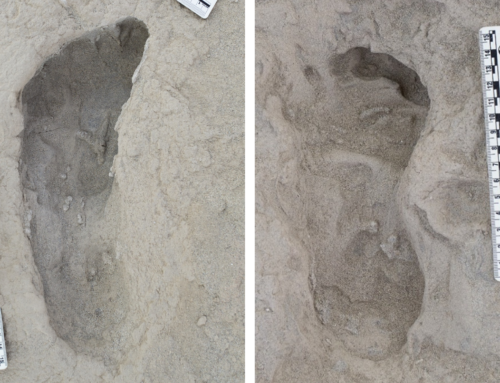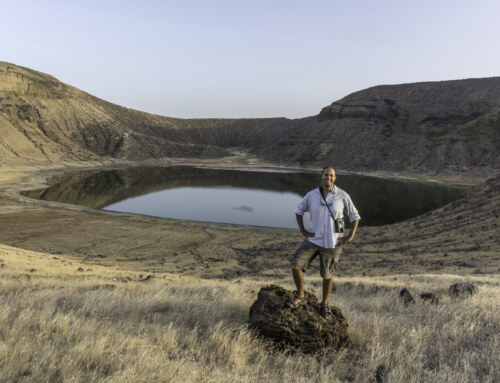Origin of Rift Valley Ecosystems (ORVE) is a research program comprising a number of projects working on both sides of Lake Turkana. Three ORVE projects are currently underway; two on the west side of the lake (Losodok/Nakwai, Tab Rasmussen) and (Kalodirr/Moruorot, James Rossie), and one on the east (Buluk, Ellen Miller).
|
“Team Buluk” 2008
|
1.) To develop a more complete understanding of the effects of rifting on Oligocene-Miocene regional ecologies. This includes documenting and interpreting the different depositional environments associated with each region, as well as study of the regional macro- and microfaunas. A more comprehensive understanding of regional ecologies in the Rift Valley system is important because habitat fragmentation occurring during the Miocene may be at the root of the evolution of modern primate and human forms. The Turkana Basin is the best place in eastern Africa to address these questions, because Rift Valley sediments preserve an unparalleled sequence of datable, fossiliferous layers.
2.) To gain a better understanding of the transition from archaic to modern African faunas. Before the Miocene, Africa was an island continent with a largely endemic fauna. In the early Miocene, Afro-Arabian and Turkish plates collided resulting in a land bridge between Africa and Eurasia. For the first time in the Cenozoic, new animals appeared in the African fossil record. These include new primates, carnivores, artiodactyls, and perissodactyls. One of the goals of the ORVE program is a more complete understanding of this faunal turnover event. Work in the Turkana Basin is critical for understanding this important faunal transition, because it is one of the few places in Africa where both latest Oligocene (e.g., Losodok) and early Miocene (e.g., Kalodirr, Buluk) sediments are preserved.
3.) To document the origin and evolution of apes and catarrhine monkeys. The third goal of work in Oligocene-Miocene deposits in the Turkana Basin is to develop a more complete understanding of the origin of apes and Old World monkeys, and the nature of the transition from archaic forms to modern ones. The earliest known Old World monkeys and apes come from early Miocene sediments in Africa, and their common ancestor was part of the archaic Oligocene fauna. Establishing a firm fossil record for Old World monkey and ape evolution enhances our understanding of the primate context within which humans evolved.
Early Miocene rhino jaw eroding out of the sediments at Buluk







